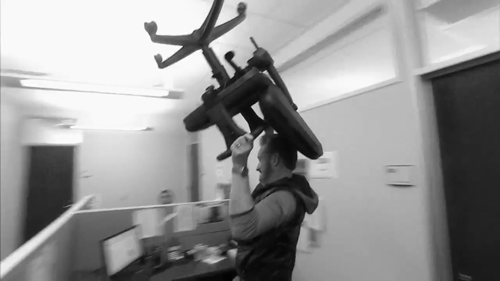You can’t keep blaming empty workstations on churn. To find out what drives workspace members out the door, Allwork tracked down former workspace members and asked them why they left.
Churn rates are an integral part of every business. Though at some points during your business you might get 0% of churn, that’s not sustainable, and it’s also not ideal.
For flexible workspace operators, churn rates can be a great indicator of how they’re performing with their staff, services, and workplace in general. If your churn rate was constantly 0, then you wouldn’t have the motivation to go search for new clients, to find ways to improve your workspace brand, and to innovate.
But, what happens when your churn rate is continuously high? Why are you losing clients? Why are people leaving your workspace and going back to working from home, a coffee shop, or simply another flexible workspace in your area?
Various factors play into this type of decision and many of these factors are entirely out of your control. Nevertheless, there will be times when people won’t feel happy or comfortable in your workspace environment.
We reached out to various workspace users to learn the main reasons why they have chosen to leave a flexible workspace to then get a membership in another. We’ve compiled some of the answers to give you the top 5 reasons why people decide to bolt through the door and never look back.
Uncomfortable furniture
Beauty is pain. Pretty but impractical furniture gives this saying a new meaning. If people are constantly fidgeting or adjusting themselves, then that means they aren’t able to focus on their tasks at hand and their productivity levels drop.
People go to your workspace to work…so if they’re not productive because the desk to chair height is off or because the chair has a weird seat, then your furniture is defeating your workspace’s purpose.
“I used to work from this very tech oriented coworking space. It looked amazing, but the furniture was super high-tech and not comfortable at all.”

Bad Acoustics
This doesn’t only apply to open and shared workspaces. Even in smaller and private offices, noises (like typing or vents) tend to bounce off the walls constantly, especially if no absorption materials were used or installed during the construction or design process.
Carpets, panels, and plants are easy fixes to this common problem. But do bear in mind that loud workplaces are not only distracting, but they can also prevent your workspace members from receiving clients or visitors within your space.
“For me, the worst was the acoustics. They didn’t want to put in carpeting, they had hardwood floors and a metal structure so you could really hear the vents and everything going on around you. I even had to tell a client she couldn’t do a radio interview there because of the noise.”
Bad or Slow Wifi
You’d think that by now this wouldn’t be an issue in today’s modern age, but it is. You have to, have to, make sure that your workspace has the necessary and adequate infrastructure for the wifi to work speedily and correctly at all times.

“I used to work from a coworking space in a really nice neighborhood. I didn’t mind the furniture or the overall design much, but the inconsistency of their wifi signal drove me out of there. There were days I could barely get any work done because the wifi was either too slow or not working at all.”
Bad Lighting and Lack of Natural Light
Remember that time we wrote about the importance of natural light in the workplace? If you didn’t believe us then, you will now.
People go to flexible workspaces because they don’t want to feel ‘caved-in’ working from home. If there’s not enough natural light coming into your workspace, then you should really make it a priority to offer some top quality lighting (the one that doesn’t strain the eyes, heats up a space, or is too dim or too bright).

People need to feel motivated and productive, otherwise they will cease to use your workspace. Lighting can help you keep members energized and feeling up to beat. Humans aren’t naturally nocturnal – we thrive on sunlight and Vitamin D. So the prospect of spending the day in a dark, morbid workspace is highly likely to kill off your members’ enthusiasm. Especially when they are paying for the privilege.
Not Enough Meeting Space Options
Meeting rooms are a workspace’s most profitable asset. But they’re a valuable asset for members as well. It’s of utter importance for you to offer at least a few options on meeting room space–some for small groups and others for larger ones.
Oftentimes, you’ll find members enjoy using small meeting rooms even when they’re working by themselves as it helps them focus. t’s also a place where they can take a call without disturbing other members.
“I used to go to a coworking space that didn’t have much in the way of conference rooms. They had this really nice one, but it was too expensive and I got the feeling they didn’t really want people in there. I didn’t like to use their phone booths when I had to take calls because they were poorly lit and had no ventilation; they were too hot.”
“Just a few months back, I was a member of a local coworking space. One of the problems was, they only had one meeting room available that could seat 12 people.”


 Dr. Gleb Tsipursky – The Office Whisperer
Dr. Gleb Tsipursky – The Office Whisperer Nirit Cohen – WorkFutures
Nirit Cohen – WorkFutures Angela Howard – Culture Expert
Angela Howard – Culture Expert Drew Jones – Design & Innovation
Drew Jones – Design & Innovation Jonathan Price – CRE & Flex Expert
Jonathan Price – CRE & Flex Expert













